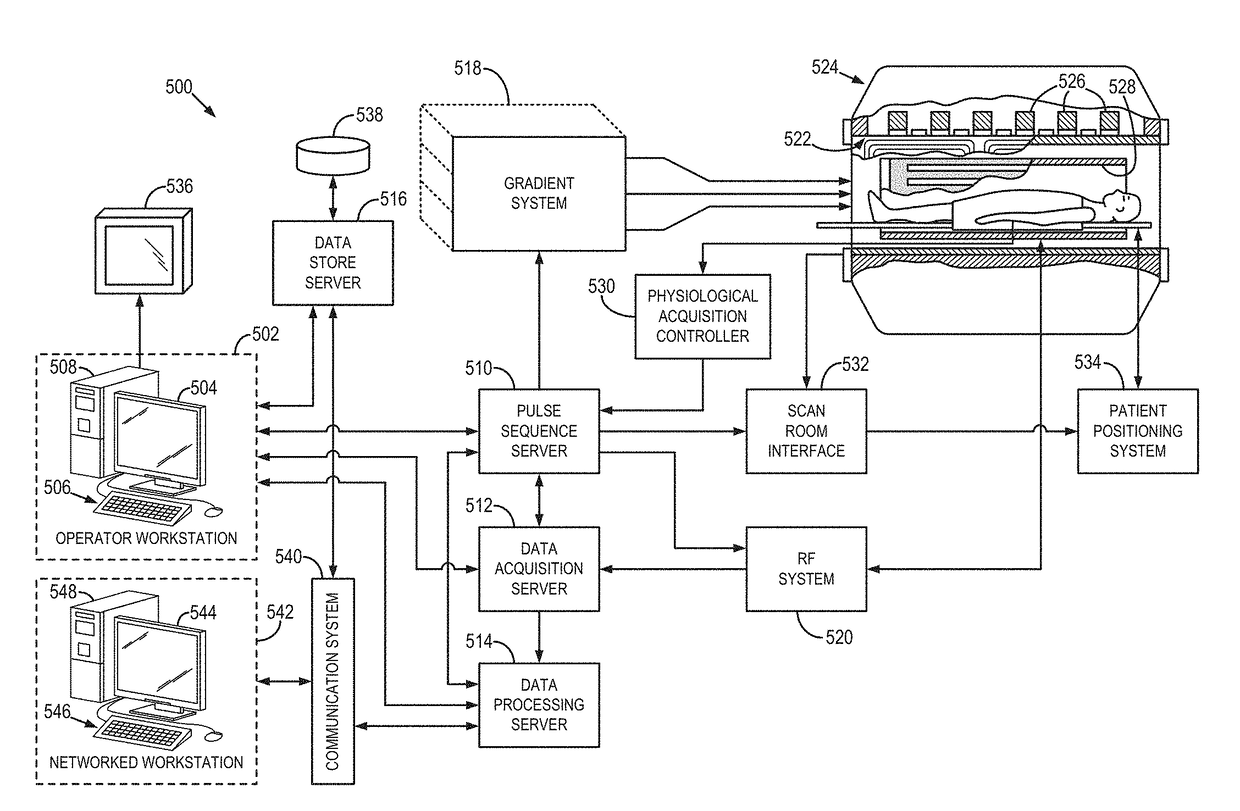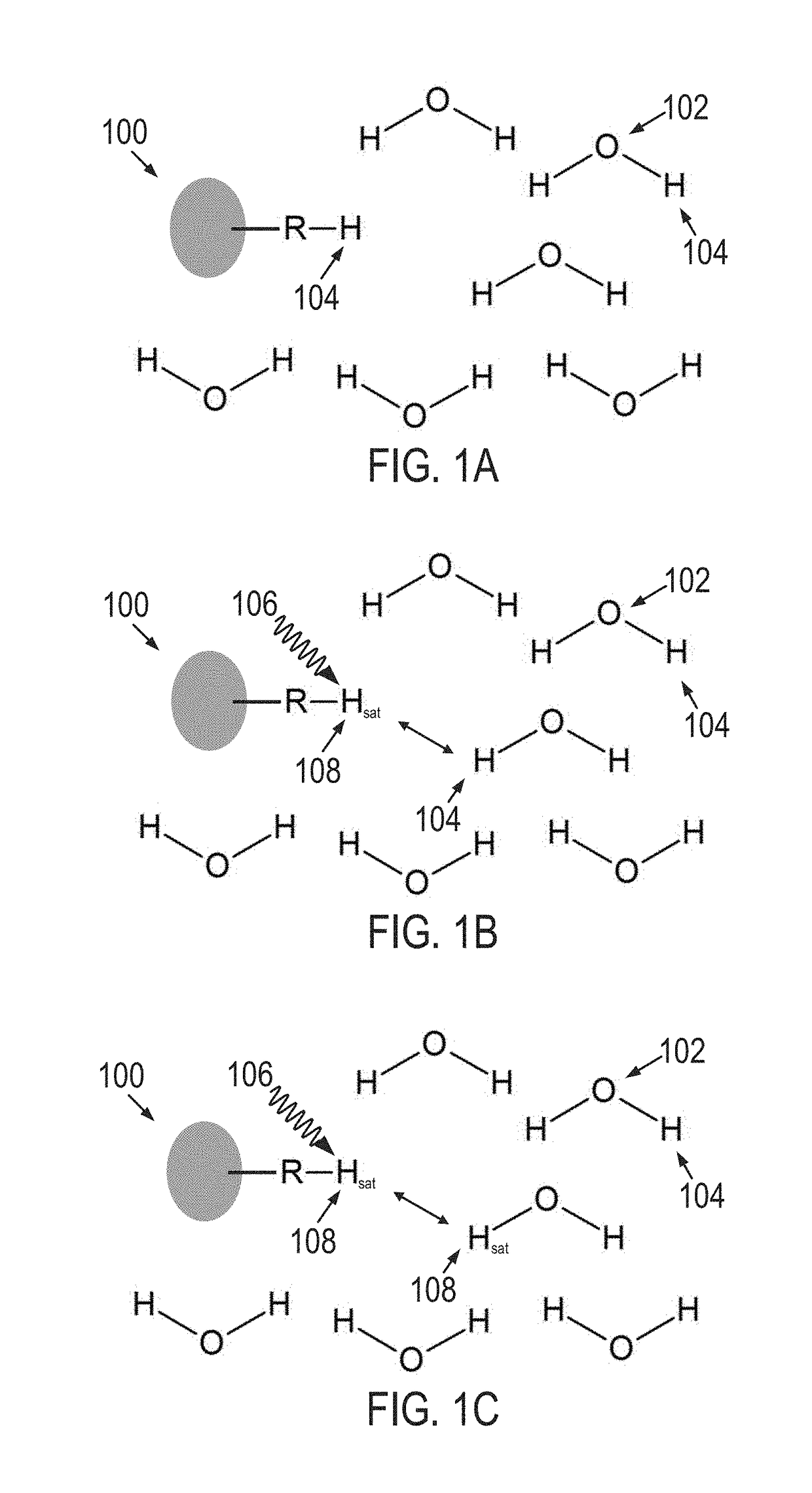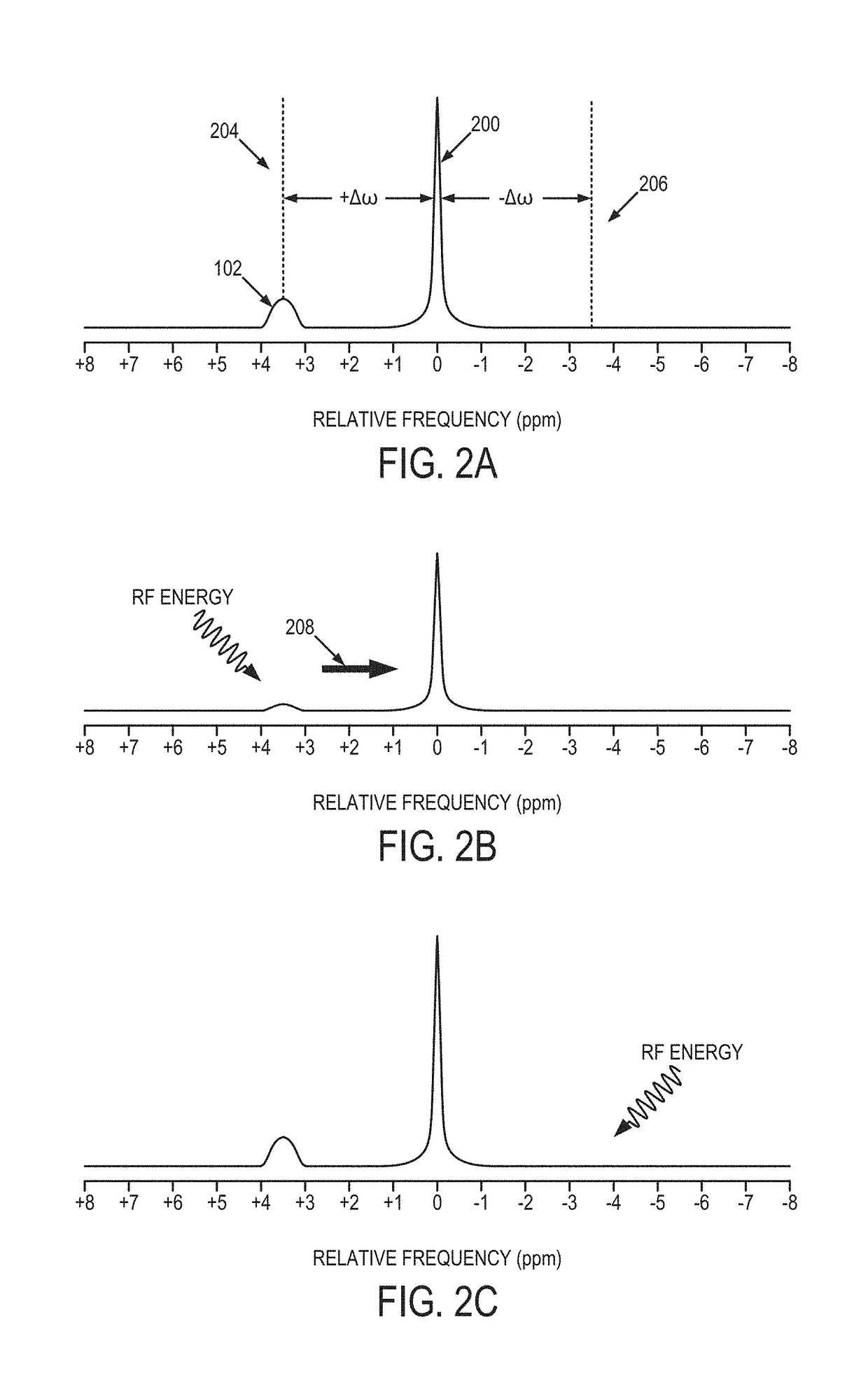Chemical exchange saturation transfer magnetic resonance imaging with gating synchronized acquisition
- Summary
- Abstract
- Description
- Claims
- Application Information
AI Technical Summary
Benefits of technology
Problems solved by technology
Method used
Image
Examples
Embodiment Construction
[0024]The MR or signals acquired with an MRI system are signal samples of the subject of the examination in Fourier space, or what is often referred to in the art as “k-space.” The MR or NMR signals can be used to measure the exchange of magnetization between molecules to provide unique information about the chemical and molecular environment of samples or tissues. One type of such exchange measurement is broadly referred to in the field as magnetization transfer. This technique is capable of measuring the exchange of magnetization from spin species that have short transverse relaxation times (T2). Because many different molecules have a short T2, this technique is not particularly specific.
[0025]A second type of magnetization exchange occurs between water protons and a molecule with long enough T2 that its difference in frequency from water can be observed. Saturation of the magnetization from this molecule will generally decrease the measurable signal from water. This effect is ge...
PUM
 Login to View More
Login to View More Abstract
Description
Claims
Application Information
 Login to View More
Login to View More - R&D
- Intellectual Property
- Life Sciences
- Materials
- Tech Scout
- Unparalleled Data Quality
- Higher Quality Content
- 60% Fewer Hallucinations
Browse by: Latest US Patents, China's latest patents, Technical Efficacy Thesaurus, Application Domain, Technology Topic, Popular Technical Reports.
© 2025 PatSnap. All rights reserved.Legal|Privacy policy|Modern Slavery Act Transparency Statement|Sitemap|About US| Contact US: help@patsnap.com



